Can I Paint Over White Dresser With Stain
Can you stain over paint? That's a question we've been hearing more and more over the years.
DIY crafters have been looking for new ways to use classic products. Reversing the traditional order of staining and painting opens up some exciting new potential when it comes to your furniture projects.
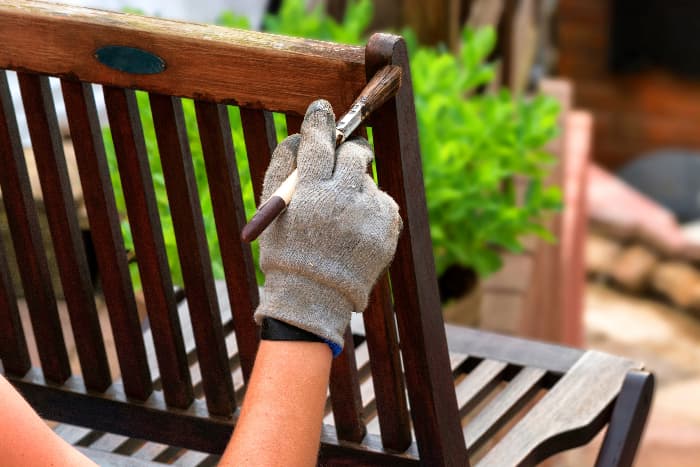
Let's get down to it. Can you stain over paint?
The Quick Answer to Can You Stain Over Paint?
Yes. You can stain over paint, but it might not turn out quite the way you expected.
Staining over paint has a unique effect on wood that creates a style that doesn't look quite painted and doesn't look quite stained. It's a combination of both! This style goes great whether you are looking to flip some old furniture or you want something that pairs with that faux shiplap style.
To figure out what's going on when we stain over paint, we need to talk about how these two different ways of styling wood work.
What's the Difference Between Paint and Stain?
Stain and paints are two broad categories of coatings that apply a color and some protection to wood projects. We don't categorize paints and stains based on their ingredients or colors, but rather by how they work on the wood itself. There are pros and cons to paints vs stains, but it all starts with knowing how each works on wood.
How Wood Stains Work
This might sound obvious, but stains stain wood. Just like spilling coffee on a blanket, wood stains soak into the fibers of the wood and locks in color by getting deep into the wood. Some stains, like Danish Oil, fully penetrate the wood and allow you to feel the unique texture of the wood grain while others leave a shiny and slick surface after soaking into the wood.
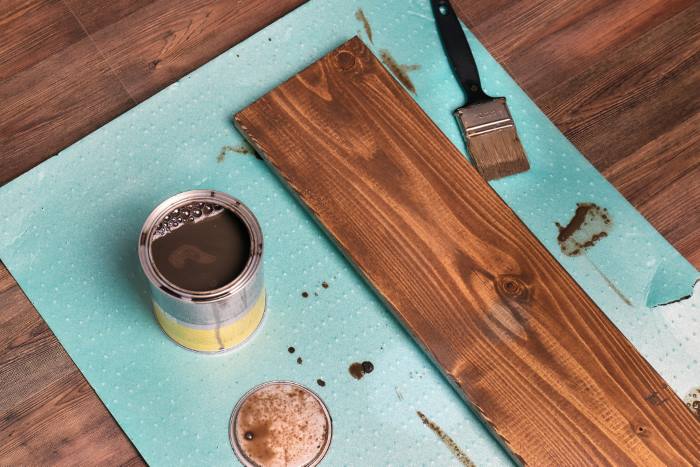
Stains are traditionally more difficult to remove than paints. You have to use chemicals and do lots of sanding to fully remove an old stain. Depending on how thick the wood was cut, it might not be possible to remove a stain without jeopardizing the structure of the project.
Paint works completely differently.
What About Paint?
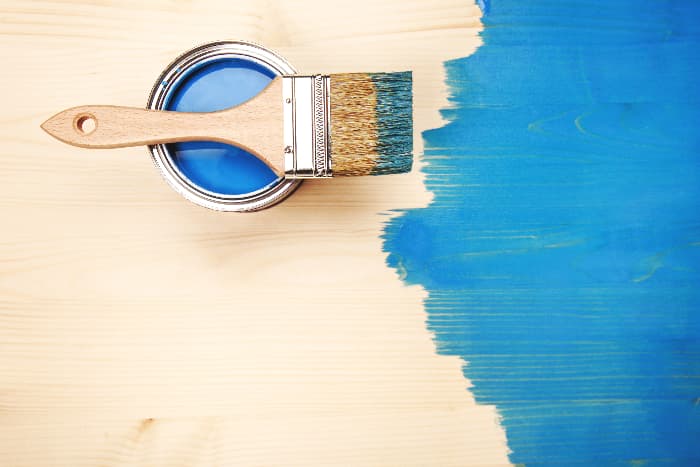
Paint applies a layer that sits on top of the wood and adheres to it.
If you think about old furniture, you might be able to remember the days of paint peeling off. Today's trendiest paints, like chalk and milk paint, are throwbacks to the old days of paint that flakes off when improperly applied. What was a sign of poor craft yesterday is today's top DIY trend.
This also shows us how paint works. Rather than soaking into the wood, the paint sits on top and sticks to the wood. This is why you can scrape paint off and see the original wood underneath, but you can't do that with stain.
You might already be guessing why it's traditionally been much easier to paint over stains rather than the other way around. However, there are ways to get around this problem, but there is an important question to ask before we get started.
Should you stain over paint?
Should You Stain Over Paint?
Let's cover one of the most asked questions about this topic first: Is it dangerous?
Some people out there in the DIY world are rightly concerned about the potential hazards of staining over paint. We're here to ease your worries.
There are no hazards outside of the standard issues that come with any staining and woodworking project. Paints and stains shouldn't have any complicated interactions with each other. Just cool and rustic style interactions, but we'll get into that in just a second!
If you're dealing with old furniture or unknown paints, we recommend that you test a small patch before going into the whole project. Pick a spot on the underside or back of the piece and apply a small amount of stain over the paint. Leave it to fully dry based on the manufacturer's recommendations. If it looks good, then you're good to go!
The only major concern to have when staining over paint is a style concern.
Thinking About Rustic and Weathered Style
Asking "can you stain over paint" is more of a style question than a technical one. The technical answer is a quick yes, but the style answer takes much more time to get into.
When you stain over paint, you're going to get a rustic style no matter what you do. This is because staining over paint creates a unique look.
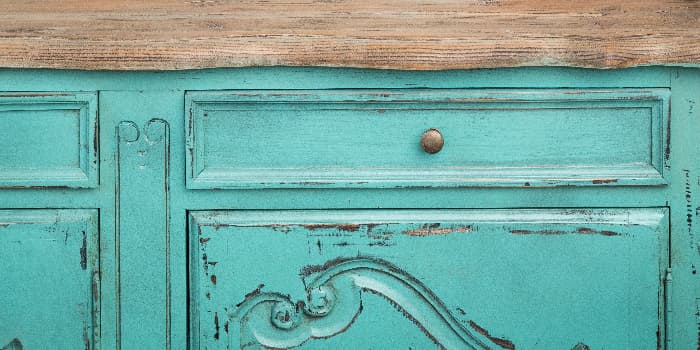
You won't get that wood grain finish when you stain over paint. Rather, you'll get a weathered and aged look to your paint job. Staining over paint adds the appearance of wear and distress to the final project. It also makes the paint job look a little faded and worn. When we get into the how-to section, we'll cover how you can make the best of this rustic effect.
Just keep in mind that staining over a paint job gives its own look and not either a painted or a stained appearance. Remember the old DIY saying: "When in doubt, test it out." Try your stain on a small section of the painted wood to make sure you'll like the final style before going all in.
If you're ready to make the jump, here's how you do it!
Three Ways To Stain Over Paint
There are three basic ways to stain over paint. One gives you a rustic look straight out of a farmhouse antique sale, another other allows the wood grain to shine through, and the third lets you blend both techniques for a unique look.
Staining Over Paint the Rustic Way
When you ask yourself: Can you stain over paint? This is probably the technique that most people are thinking about. It creates a patina that gives the illusion of age to a painted item.

In order to do this style of staining over paint, all you need to do is give your painted wood a light sanding and then apply your stain.
Really. It's that simple.
The light sanding scuffs up the surface of the paint and gives the stain something to grab onto. You can apply as little or as much stain as you'd like, but remember to wipe the excess stain away. Applying multiple thin coats is the best way to achieve a more stained look rather than applying one or two thick coats.
This style works the best if your painted wood has plenty of dings, dents, and scuffs to it. These subtle flaws give the stain places to really grab onto. This makes the flaws in the wood really pop for an eye-catching rustic appearance.
Our next technique is the official way of staining over wood.
Staining Over Paint the Technical Way
This is how you "should" stain over wood. If you had a wood shop teacher at any point in your life, this is how they would tell you to get this project done.
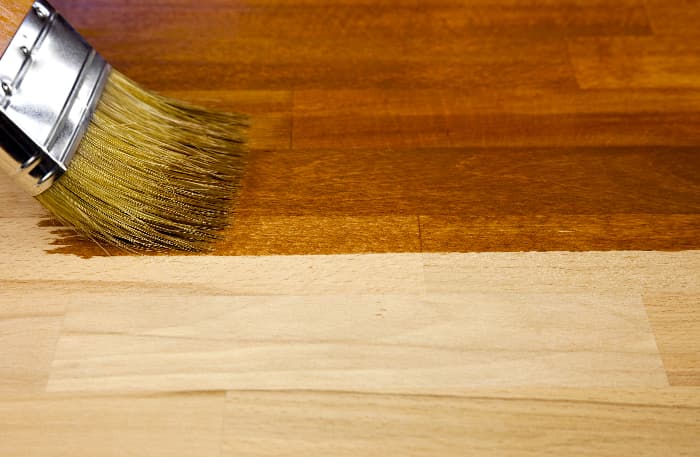
Your first step is to sand, scrape, or use chemicals to remove the paint from the wood. This will leave the surface of the wood exposed for the stain. The stain can then properly soak into the wood to reveal the best of the underlying grain.
Keep in mind that the wood has still aged beneath the paint and the final appearance will be shaped by the type of paint and a wide range of other factors.
What if you wanted both?
The Best of Both Worlds
If you're asking yourself "How can I stain over paint in a way that lets me have the best of both worlds?" then we've got a trick for you!
Here's how you can do it. Instead of just going to town with the stain or removing all of the paint, you need to be a little more strategic.
Use your sander to remove paint from "stress areas." What are stress areas? They're the places on furniture or other wood decor that receive the most contact or use. Think about the arms of a chair or the corners of an old wooden chest. These are the places that get grabbed, knocked into, and used the most.
These spots are going to have the most wear out of the other places on your painted wood project. Sanding them down to the wood grain will allow your stain to really let the wood pop.
This gives you a mixed look. Your finished piece will be partly stained wood grain and partly rustic painted wood. This effect is eye-catching and a great way to spice up furniture or accent pieces.
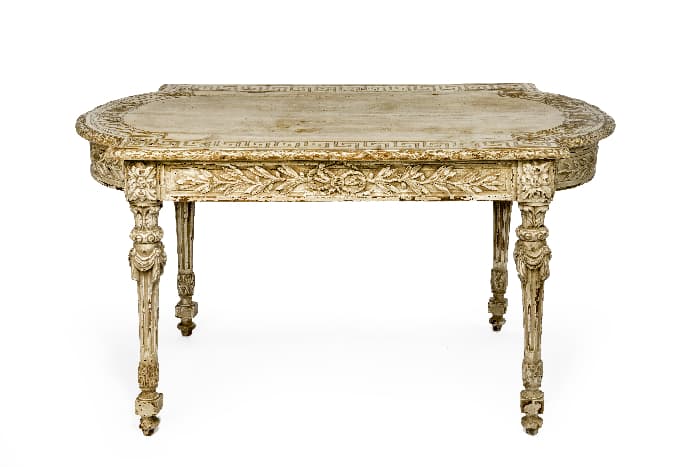
No matter which route you take, you'll want to think about protecting and finishing your furniture after you're done staining over paint.
So, Can You Stain Over Paint?
Staining over paint has become more common as rustic, DIY, and farmhouse styles have become more popular in homes across the country. While the answer to this question is a quick yes, we've gone over a few things you should keep in mind.
- Staining over paint gives a rustic, farmhouse feel to your project
- This will make the painted wood look aged
- The more paint you remove, the more you'll blend the stained and painted styles
- This doesn't create a "stained" look that shows off wood grain, but rather creates its own look
If all of this sounds like your reclaimed furniture dreams come true, you can stain over paint today!
For more ideas about decorating, visit the following links on our website.
- How to Update Old Furniture
- Repurposed Furniture Ideas I Think You Will Love!
- Can You Paint Over Stain?
Source: https://www.thatsweettealife.com/can-you-stain-over-paint/
0 Response to "Can I Paint Over White Dresser With Stain"
Post a Comment